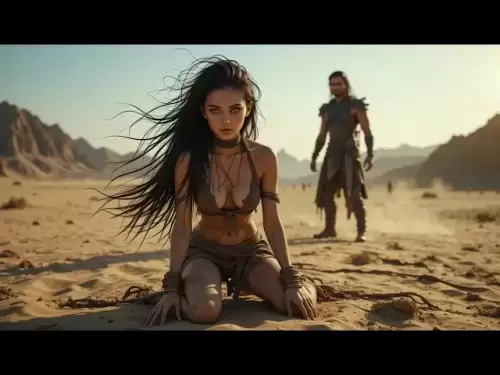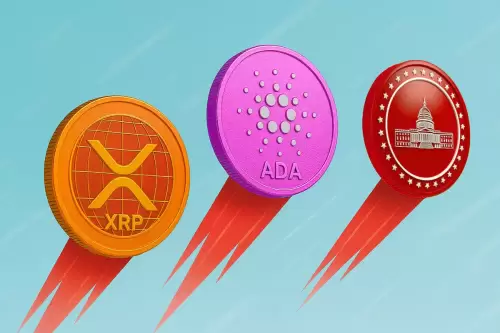 |
|
 |
|
 |
|
 |
|
 |
|
 |
|
 |
|
 |
|
 |
|
 |
|
 |
|
 |
|
 |
|
 |
|
 |
|
マルチモーダルAIは、単一の会話またはタスク内で複数のデータ型を使用して理解、生成、および応答できるシステムを作成するために急速に進化します

Multimodal AI is rapidly evolving to create systems that can understand, generate, and respond using multiple data types within a single conversation or task. This capability, crucial for seamless human-AI communication, is being actively researched as users increasingly engage AI for tasks like image captioning, text-based photo editing, and style transfers.
マルチモーダルAIは、単一の会話またはタスク内で複数のデータ型を使用して理解、生成、および応答できるシステムを作成するために急速に進化しています。シームレスなヒューマンアイコミュニケーションに重要なこの機能は、ユーザーが画像キャプション、テキストベースの写真編集、スタイルの転送などのタスクにAIをますます関与させるため、積極的に研究されています。
A major obstacle in this area stems from the misalignment between language-based semantic understanding and the visual fidelity required in image synthesis or editing. When separate models handle different modalities, the outputs often become inconsistent, leading to poor coherence or inaccuracies. For instance, the visual model might excel in an image but fail to comprehend the nuanced instructions, while the language model might understand the prompt but cannot shape it visually.
この分野の主要な障害は、言語ベースのセマンティック理解と画像の合成または編集に必要な視覚的忠実度との間違いに起因します。個別のモデルが異なるモダリティを処理すると、出力はしばしば一貫性がなく、一貫性や不正確さが不十分になります。たとえば、視覚モデルは画像で優れているかもしれませんが、微妙な指示を理解できませんが、言語モデルはプロンプトを理解しているかもしれませんが、視覚的に形作ることはできません。
This approach also demands significant compute resources and retraining efforts for each domain. Thus, the inability to seamlessly link vision and language into a coherent and interactive experience remains one of the fundamental problems in advancing intelligent systems.
また、このアプローチには、各ドメインの重要な計算リソースと再訓練の取り組みが必要です。したがって、ビジョンと言語を一貫したインタラクティブな体験にシームレスにリンクできないことは、インテリジェントシステムを進める際の根本的な問題の1つです。
In recent attempts to bridge this gap, researchers have combined architectures with fixed visual encoders and separate decoders that function through diffusion-based techniques. Tools such as TokenFlow and Janus integrate token-based language models with image generation backends, typically emphasizing pixel accuracy over semantic depth. While these approaches can produce visually rich content, they often miss the contextual nuances of user input.
このギャップを埋める最近の試みでは、研究者はアーキテクチャを固定視覚エンコーダと拡散ベースの技術を通じて機能する個別のデコーダーと組み合わせました。 TokenflowやJanusなどのツールは、トークンベースの言語モデルを画像生成バックエンドと統合し、通常、セマンティックの深さにわたってピクセルの精度を強調します。これらのアプローチは視覚的に豊富なコンテンツを生成できますが、ユーザー入力のコンテキストニュアンスを見逃すことがよくあります。
Others, like GPT-4o, have moved toward native image generation capabilities but still operate with limitations in deeply integrated understanding. The friction lies in translating abstract text prompts into meaningful and context-aware visuals in a fluid interaction without splitting the pipeline into disjointed parts.
GPT-4Oのような他の人々は、ネイティブの画像生成機能に移行しましたが、深く統合された理解の制限で動作します。摩擦は、抽象的なテキストのプロンプトを、パイプラインをばらばらの部分に分割することなく、流動的な相互作用における意味のあるコンテキスト対応のビジュアルに翻訳することにあります。
Now, researchers from Inclusion AI, Ant Group have presented Ming-Lite-Uni, an open-source framework designed to unify text and vision through an autoregressive multimodal structure. The system features a native autoregressive model built on top of a fixed large language model and a fine-tuned diffusion image generator. This design is based on two core frameworks: MetaQueries and M2-omni.
現在、Inclusion AIの研究者は、Autore-Godisionsionsedマルチモーダル構造を通じてテキストとビジョンを統一するために設計されたオープンソースフレームワークであるMing-Lite-Uniを発表しました。このシステムは、固定された大型言語モデルの上に構築されたネイティブの自動脱着モデルと、微調整された拡散画像ジェネレーターを備えています。このデザインは、メタケリーとM2-OMNIの2つのコアフレームワークに基づいています。
Ming-Lite-Uni introduces an innovative component of multi-scale learnable tokens, which act as interpretable visual units, and a corresponding multi-scale alignment strategy to maintain coherence between various image scales. The researchers have provided all the model weights and implementation openly to support community research, positioning Ming-Lite-Uni as a prototype moving toward general artificial intelligence.
Ming-Lite-Uniは、解釈可能な視覚ユニットとして機能するマルチスケール学習可能なトークンの革新的なコンポーネントと、さまざまな画像スケール間の一貫性を維持するための対応するマルチスケールアライメント戦略を導入します。研究者は、すべてのモデルの重みと実装を公然と提供し、コミュニティの研究をサポートし、ミンライトウニを一般的な人工知能に向かって移動するプロトタイプとして位置づけています。
The core mechanism behind the model involves compressing visual inputs into structured token sequences across multiple scales, such as 4×4, 8×8, and 16×16 image patches, each representing different levels of detail, from layout to textures. These tokens are processed alongside text tokens using a large autoregressive transformer. Each resolution level is marked with unique start and end tokens and assigned custom positional encodings.
モデルの背後にあるコアメカニズムには、4×4、8×8、16×16の画像パッチなど、複数のスケールにわたって視覚入力を構造化されたトークンシーケンスに圧縮することが含まれます。これらのトークンは、大きな自己回帰トランスを使用してテキストトークンと一緒に処理されます。各解像度レベルには、一意の開始トークンとエンドトークンがマークされ、カスタムポジションエンコーディングが割り当てられています。
The model employs a multi-scale representation alignment strategy that aligns intermediate and output features through a mean squared error loss, ensuring consistency across layers. This technique boosts image reconstruction quality by over 2 dB in PSNR and improves generation evaluation (GenEval) scores by 1.5%.
このモデルは、平均四角エラー損失を介して中間体と出力の特徴を整列させるマルチスケール表現アライメント戦略を採用し、レイヤー間の一貫性を確保します。この手法は、PSNRで2 dBを超える画像の再構成品質を高め、生成評価(Geneval)スコアを1.5%改善します。
Unlike other systems that retrain all components, Ming-Lite-Uni keeps the language model frozen and only fine-tunes the image generator, allowing faster updates and more efficient scaling. The system was tested on various multimodal tasks, including text-to-image generation, style transfer, and detailed image editing using instructions like “make the sheep wear tiny sunglasses” or “remove two of the flowers in the image.”
すべてのコンポーネントを再訓練する他のシステムとは異なり、Ming-Lite-Uniは言語モデルを凍結し、画像ジェネレーターのみを微調整して、より速い更新とより効率的なスケーリングを可能にします。このシステムは、テキストからイメージの生成、スタイルの転送、「羊を小さなサングラスを履かせる」や「画像の2つの花を削除する」などの手順を使用して、テキストから画像の生成、スタイルの転送、詳細な画像編集など、さまざまなマルチモーダルタスクでテストされました。
The model handled these tasks with high fidelity and contextual fluency. It maintained strong visual quality even when given abstract or stylistic prompts such as “Hayao Miyazaki’s style” or “Adorable 3D.”
このモデルは、これらのタスクを高い忠実度と文脈的な流encyで処理しました。 「Hayao Miyazaki's Style」や「Adorable 3D」などの抽象的または文体的なプロンプトが与えられた場合でも、強力な視覚品質を維持しました。
The training set spanned over 2.25 billion samples, combining LAION-5B (1.55B), COYO (62M), and Zero (151M), supplemented with filtered samples from Midjourney (5.4M), Wukong (35M), and other web sources (441M). Furthermore, it incorporated fine-grained datasets for aesthetic assessment, including AVA (255K samples), TAD66K (66K), AesMMIT (21.9K), and APDD (10K), which enhanced the model’s ability to generate visually appealing outputs according to human aesthetic standards.
トレーニングセットは、Midjourney(5.4M)、Wukong(35M)、およびその他のWebソース(441M)のろ過されたサンプルを添加したLaion-5B(1.55b)、Coyo(62m)、およびZero(151m)を組み合わせて、22億5,000万億を超えるサンプルに及びました。さらに、AVA(255Kサンプル)、TAD66K(66K)、Aesmmit(21.9K)、およびAPDD(10K)を含む、美的評価のためにきめ細かいデータセットを組み込みました。
The model combines semantic robustness with high-resolution image generation in a single pass. It achieves this by aligning image and text representations at the token level across scales, rather than depending on a fixed encoder-decoder split. The approach allows autoregressive models to carry out complex editing tasks with contextual guidance, which was previously hard to achieve. FlowMatching loss and scale-specific boundary markers support better interaction between the transformer and the diffusion layers.
このモデルは、単一のパスでセマンティックの堅牢性と高解像度の画像生成を組み合わせています。これは、固定エンコーダーデコーダーの分割に依存するのではなく、スケール全体でトークンレベルで画像とテキストの表現を調整することで達成します。このアプローチにより、自動回復モデルは、以前は達成するのが困難だったコンテキストガイダンスで複雑な編集タスクを実行できます。フローマッチングの損失とスケール固有の境界マーカーは、変圧器と拡散層の間のより良い相互作用をサポートします。
Overall, the model strikes a rare balance between language comprehension and visual output, positioning it as a significant step toward practical multimodal AI systems.
全体として、このモデルは言語の理解と視覚出力の間のまれなバランスを取り、それを実用的なマルチモーダルAIシステムに向けた重要なステップとして配置します。
Several Key Takeaways from the Research on Ming-Lite_Uni:
Ming-Lite_uniの研究からのいくつかの重要なポイント:
免責事項:info@kdj.com
提供される情報は取引に関するアドバイスではありません。 kdj.com は、この記事で提供される情報に基づいて行われた投資に対して一切の責任を負いません。暗号通貨は変動性が高いため、十分な調査を行った上で慎重に投資することを強くお勧めします。
このウェブサイトで使用されているコンテンツが著作権を侵害していると思われる場合は、直ちに当社 (info@kdj.com) までご連絡ください。速やかに削除させていただきます。





























































